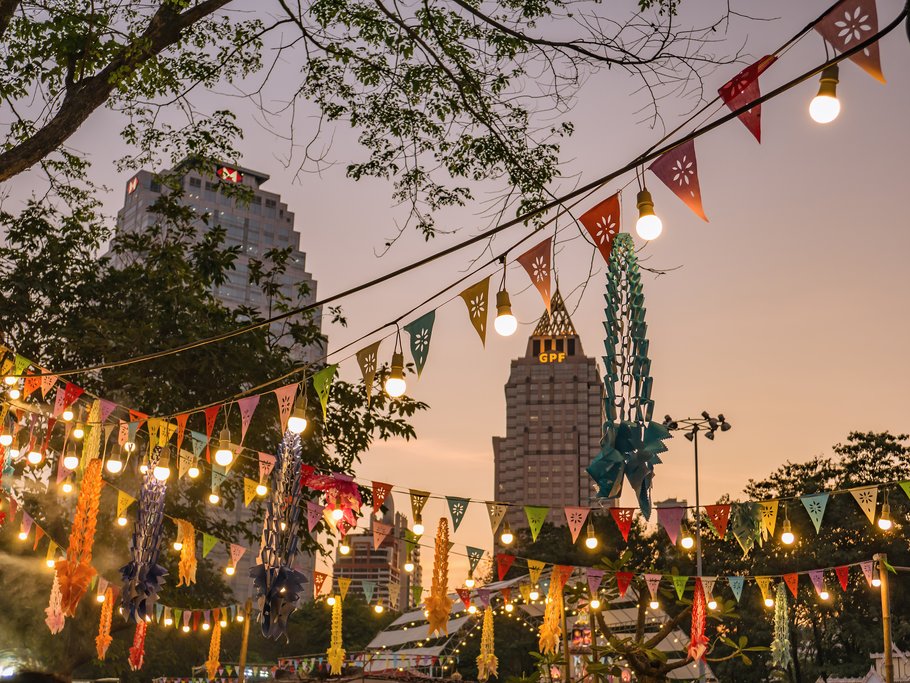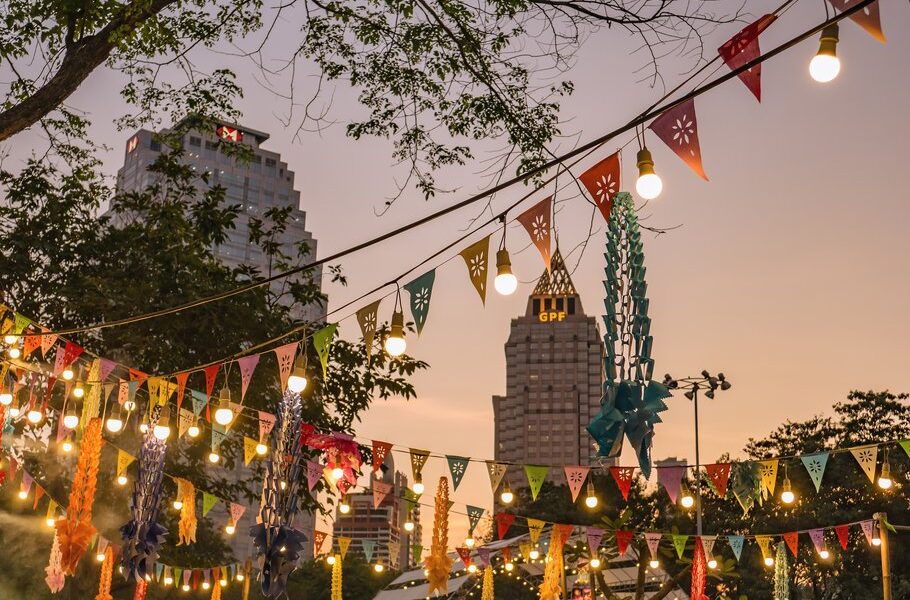
January is one of the best times of the year to visit Thailand. High season is in full effect with perfect weather in just about every part of the country. It’s cooler than other times of the year, especially up north around Chiang Mai where January ties with December for lowest average temperatures. The Chinese New Year often falls in January, and when this happens, it brings all sorts of delightful festivities and celebrations (the only downside being larger crowds and pricier hotels—book in advance!).
Thailand beckons travelers with its exotic allure, rich culture, and stunning landscapes. January, in particular, presents an enticing opportunity to explore this Southeast Asian jewel. The weather across the country is generally pleasant, offering a respite from the intense heat and humidity that characterize other times of the year. However, the popularity of this month also means dealing with larger crowds and potentially higher prices. Understanding these factors will help you plan a memorable and fulfilling trip.
## Weather in January
The climate in Thailand during January varies depending on the region. In the northern mountains and central plains, temperatures are relatively mild, especially when compared to the scorching heat of the summer months. This period also coincides with the driest time of year, creating ideal conditions for outdoor activities and exploration.
For instance, in Chiang Mai, the average rainfall is minimal, with only a single day typically experiencing precipitation throughout the entire month. Similarly, Bangkok enjoys dry weather, making it perfect for sightseeing and wandering through the city’s vibrant streets. Temperatures in Bangkok hover around a comfortable 70 degrees Fahrenheit, offering a welcome break from the humidity. The northern mountains can experience cooler temperatures, dropping as low as 57 degrees Fahrenheit, particularly in the evenings. However, daytime highs in both regions generally range from the mid-80s to the low 90s, providing plenty of sunshine and warmth.
The southern peninsula also benefits from cooler weather in January, with temperatures along both coasts generally ranging from the mid-70s to the mid-80s. The western coast, which includes towns such as Phuket, experiences drier conditions. On the other hand, the eastern side, home to destinations like Koh Samui and other beautiful beaches, tends to receive slightly more rainfall, averaging around nine wet days throughout the month.
## Crowds and Costs
The undeniable allure of Thailand in January comes with a caveat: it’s an incredibly popular time to visit. This surge in tourism translates to larger crowds at popular attractions and higher prices for accommodations and transportation. Be prepared to encounter long lines at iconic landmarks such as Wat Pho, the magnificent Temple of the Reclining Buddha, and the opulent Grand Palace in Bangkok.
To mitigate the impact of the crowds, it is advisable to arrive early at popular destinations and consider visiting larger attractions on weekdays whenever possible. This strategy can help you avoid the peak hours and enjoy a more peaceful and immersive experience.
In addition to the crowds, you should also anticipate higher costs during this peak season. Hotels often double their prices, particularly in coastal resorts and other towns that attract a significant number of tourists. Booking accommodations well in advance is crucial to secure the best deals and avoid disappointment.
Furthermore, keep in mind that trains tend to fill up quickly during this time of year. While traveling by bus offers more flexibility, if you prefer to travel by rail, it’s essential to book your tickets at least a week in advance to ensure availability.
## Where to Go in Thailand in January
Given the favorable weather conditions and minimal rainfall, virtually all of Thailand is a fantastic destination to visit in January. The central part of the country and its surrounding areas offer temperatures ranging from 70 to 90 degrees Fahrenheit, creating a comfortable environment for exploring the region. Bangkok, the bustling capital city, is a hub of activity, offering a diverse range of attractions and experiences. In addition to sightseeing, January is an excellent time for people-watching, immersing yourself in the local culture, and observing the daily lives of the city’s inhabitants. Chinatown is particularly captivating during this time, as it prepares for the Chinese New Year, which usually falls in late January or early February. The colorful neighborhood transforms into a vibrant spectacle, adorned with dazzling lights and hosting lively dragon parades and other festive activities.
In the northern region, the cooler weather makes it an ideal time to visit Chiang Mai and Chiang Rai. The temperatures in these mountain towns are mild enough that you might even want to bring a sweater or jacket, especially for the evenings. Chiang Mai is a vibrant city with a thriving nightlife scene. January is one of the best times of year to experience its diverse culinary offerings, live music venues, and lively clubs. The elephant sanctuaries located near Chiang Rai are particularly appealing during this season, as the weather is neither too hot nor too rainy, making it comfortable to trek outside and observe these majestic creatures in their natural habitat.
The southern region of Thailand boasts stunning beaches in January, especially along the western coast. In Phuket, for example, temperatures range from approximately 73 to 88 degrees Fahrenheit, providing the perfect balance for enjoying the beach without feeling overwhelmed by excessive heat. It’s a great month for relaxing by the pool, swimming in the crystal-clear ocean, and soaking up the sun.
The eastern side of the country, along the Gulf of Thailand, experiences the tail end of its rainy season, particularly during the first part of the month. However, the rainfall is relatively limited, averaging around nine rainy days per month, with most of the precipitation occurring in early January. This makes the latter part of the month an ideal time to visit destinations like Koh Samui, where you can enjoy the beautiful beaches and explore the island’s many attractions.
## What to Do in Thailand in January
In Bangkok, be sure to visit Wat Pho, the famous Temple of the Reclining Buddha, located in the Phra Nakhon District. This iconic temple houses a massive statue of the reclining Buddha, which symbolizes the Buddha’s entry into Nirvana. The statue is an awe-inspiring sight, towering 50 feet high and stretching out an impressive 150 feet. Nearby, you can explore the Grand Palace, which served as the residence of the Kings of Siam from the 18th century until 1925. The palace offers a glimpse into the rich history and royal heritage of Thailand.
Journey north to Chiang Rai and spend time at the Elephant Valley Thailand, an ethical sanctuary that rescues and rehabilitates elephants. Here, you can observe the animals as they roam freely, watch their trainers bathing them, and even have the opportunity to feed them bananas or pieces of bamboo. In Chiang Mai, explore the vibrant Chiang Mai Night Bazaar, a bustling marketplace filled with local crafts, souvenirs, and delicious street food. Alternatively, visit the breathtaking Doi Suthep temple, perched atop a mountain overlooking the city. If you arrive at sunrise, you’ll be rewarded with stunning panoramic views of Chiang Mai.
On the coasts of the southern Kra Isthmus, the resort town of Phuket offers sweeping white sand beaches and crystal-clear turquoise waters. Take advantage of the pleasant weather by indulging in ocean activities such as snorkeling, scuba diving, or sea kayaking. It’s also an excellent time to take a tour of Phang Nga Bay, famous for its dramatic limestone cliffs, or embark on a day trip to the idyllic Phi Phi Island, renowned for its stunning natural beauty.
In Koh Samui, explore the pristine Ang Thong Marine National Park, a collection of spectacular islands boasting pristine beaches, hidden lagoons, and diverse marine life. Alternatively, stroll through the quaint Bophut Fisherman’s Village, a charming seaside town with a relaxed atmosphere and a variety of shops, restaurants, and cafes.
## Events in January
Chinese New Year: Although this holiday occasionally falls in early February, the Chinese New Year is typically celebrated in late January. This vibrant celebration involves colorful parades, dazzling fireworks displays, and a wide range of cultural performances. The festivities attract locals with Chinese roots, as well as tourists and other celebrants from around the world, creating a lively and festive atmosphere that lasts for a full week.
B-2598

